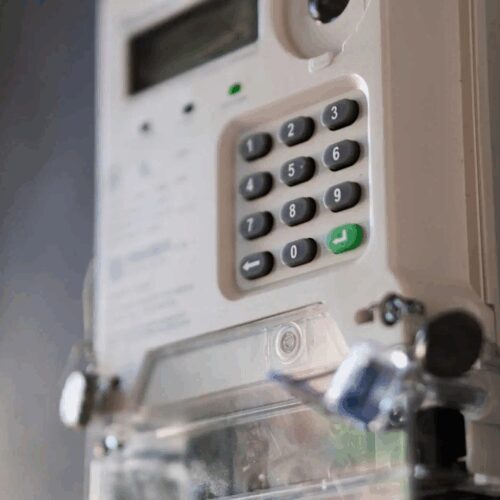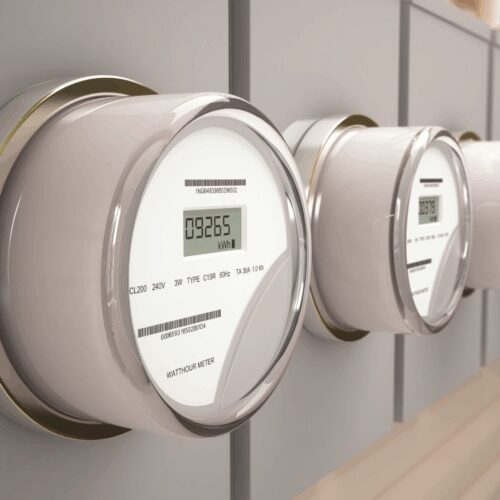The 4 Universal Truths of a Successful TOU Rate Transition
Having been part of the most successful TOU implementations, we’ve learned a few best practices worth sharing.

Having been part of the most successful TOU implementations, we’ve learned a few best practices worth sharing.

Sign up for our magazine
The premier outlet for compelling storytelling around the innovators and innovations driving the clean energy transition.
Time-of-use (TOU) and other complex rate structures are critical to managing an increasingly complex electric grid, achieving decarbonization goals, and integrating distributed energy resources (DERs).
TOU rate structures consist of a basic pricing scheme that has defined on-peak and off-peak time periods that vary depending on the time of day, day of the week (weekday or weekend), holiday, or season.
Transitioning to a time-of-use rate can reduce strain on the electrical grid. It’s also important to bear in mind that when people shift from their current rate plan to a more efficient time-of-use rate plan, they can actually reduce energy bills.
So why aren’t more customers transitioning to a TOU rate plan? According to EIA data, while TOU rate plans are available to 62% of U.S. residential customers, only 7.3% are enrolled in the plans.
This lack of engagement surrounding more effective and efficient energy rate plans is something we need to address. Especially since, according to renewable energy statistics, 35% of the world’s energy will be generated through renewable energy sources like solar power and wind energy by 2025. Ensuring customers are on the best rate plan for their energy usage behavior, including DER adoption, will be key to customer satisfaction.
Through our work helping utilities like SMUD, PG&E, SCE, PSEG LI, and Consumers Energy successfully roll out TOU rates, we’ve landed on some universal truths. If applied, these will not only get more customers on time varying rates, but will also help them save money and contribute to utility decarbonization goals.
Universal truth #1 – Personal insight is powerful
As an industry, we’ve done a great job conveying insights that get people interested in their overall energy usage. And, up until recently, changes in usage usually translated to similar changes in customers’ bills.
However, with the prompt rollout of new time-varying rates, demand response, community choice aggregation (CCA) programs, and other customer plans, the relationship between changes in energy use and changes in customer electricity prices has gotten more complicated.
In fact, as utilities aggressively pursue decarbonization goals, one of their primary methods to achieve the goals is to get their customers to enroll in these new rates and programs. But most customers just want to understand the impact on their bill if they do adopt these new rates and programs.
This is an exceptional time to gain the trust of customers and add real value. Providing straightforward and clear rate comparisons and rate analysis is crucial to creating customer adoption that will not only cut emissions and electricity usage but also improve electricity bills for utility customers.
Companies like PG&E gave customers incentives to help implement TOU rates, such as allowing bill protection for those who automatically transitioned onto the time-of-use rate plan, making it possible for them to try the rate plan risk-free for a year. If customers paid more with the time-of-use rate plan than on their previous tiered rate plan, they’d be given a bill credit.
Improved plans and incentives can help customers utilize clean energy sources such as electric vehicles, solar power, and more, helping to cut their energy bill and improve TOU rate transition adoption. The key to making this process successful, however, is accurate and personalized calculations.
The last thing utilities want to do is provide analysis to customers that tells them to enroll in a rate or program that increases their bills. To ensure the accuracy of these hypothetical rate comparisons, utilities should ensure that the system providing the calculations is calibrated with its existing billing system or customer information system (CIS).
Through calibration (sometimes referred to as shadow billing), the utility can measure whether the rate engine producing the rate comparisons is able to match, with penny-level precision and across the whole customer population, the calculations produced by its CIS.
When this level of accuracy and fidelity is achieved, the utility will have the greatest confidence that the hypothetical rate comparisons and analyses are as accurate as possible too, leading to a great customer experience and increased satisfaction and trust in the utility.
Universal truth #2 – Customers don’t understand what kWh means
The Smart Energy Consumer Collaborative (SECC) found that a vast majority of residential customers are interested in energy technology. A substantial factor for this interest is the desire to lower their overall electricity bill and energy costs.
The implementation of TOU rates is not only helpful for high-energy users but also can help all residential customers reduce costs by shifting energy consumption to off-peak hours at lower rates.
With all of the positives associated with TOU rates when compared to other rate options, one would assume that every energy customer would be rushing to utilize these time-of-day plans. However, energy customers remain confused about how they work and the cost implications.
This disconnect can greatly impact electricity rates and the energy future of a cleaner grid.
Most energy users still don’t understand how utility companies measure residential rates. Many people don’t know how to properly implement their renewable energy resources, the impact peak periods can have on their electric service, or that a kilowatt hour (kWh) is the energy needed to run a 1,000-watt appliance for 1 hour.
It’s imperative that we work harder to convey clear and consistent messaging and insights to communicate what rate options are and the impact each has on a customer’s bill in dollars and cents.
Providing general insights in the form of units, which are hard to relate to, won’t move the needle. Clear data into customer energy savings due to better TOU rate plans can help gain better traction.
Universal truth #3 – Your CIS wasn’t built for this
The ability to use smart meter data to perform actual and hypothetical billing across all rates and tariffs, for every utility customer statewide or in the country, is incredibly difficult.
While the CIS is obviously very important to the utility, essentially serving as their cash register, they can’t analyze the impact of peak pricing or different rates on a customer’s bill with the accuracy and sophistication demanded (even if they claim to be able to).
The CIS was configured to calculate the customer’s bill only once a month. Providing energy customers with bill forecasts and simulations based on multiple rate plans and scenarios (load shift, electric vehicle, solar power as examples) is so much more data intensive.
Consider the utility has about 720 and 2,880 meter reads per customer per month. Every customer bill has about 10 line items. An all-encompassing rate analysis needs to be accomplished over a minimum of 12 months. For a utility with 1 million meters, this can equate to trillions of calculations to compare bills for the utility’s entire customer population across multiple rate plans. CIS systems just do not possess the necessary computing power…and utilities don’t want to put the nightly billing process at risk.
The number and complexity of calculations required to get to penny-level accuracy are incredibly difficult. Don’t assume that having a CIS is synonymous with being able to do complex rate analytics. You need an enterprise rate platform for that.
Universal truth #4 – Accuracy means everything
Rate plan marketing requires a multi-faceted approach. Consistent messaging must be communicated across a range of channels, like direct mail, bill inserts, digital marketing, social promotions, TV, and radio ads.
These all play an important role in educating the customer on the value of TOU rates. But there is another important tool in increasing the adoption of complex programs and technologies.
We are big believers in comparison tools. Southern California Edison (SCE) used one during their TOU transition (and it’s still available today), leading to some pretty awesome results.
For their default pilot that started in March 2018, only 12% of the 400,000 customers opted out of the TOU rates prior to the transition. Since then, only 2% switched back to the tiered rate plan.
The rate comparison tool also led to increased customer awareness and satisfaction. Specifically, they saw a 400% increase in customers using the tool. And among those who say they are on a TOU rate, the proportion who believe it is the best rate for them rose significantly from 66% to 82% in fall 2019.
Providing cost analyses via rate tools with detailed impacts for the complete bill helps utilities enhance customer engagement, satisfaction, and trust when implementing time-of-use rates. But again, make sure those projections are accurate because the last thing you want is to set an expectation that the bill doesn’t deliver on.
TOU rate transition and our clean energy future
To achieve clean energy and decarbonization goals, we need to create widespread adoption of time varying rates and other programs. These universal truths, which we’ve derived from several successful implementations across the country, are a great place to start.
Only when we get customers’ highly accurate cost information, delivered in a way that gets them comfortable with making the switch, will the time-of-use transition be successful.





